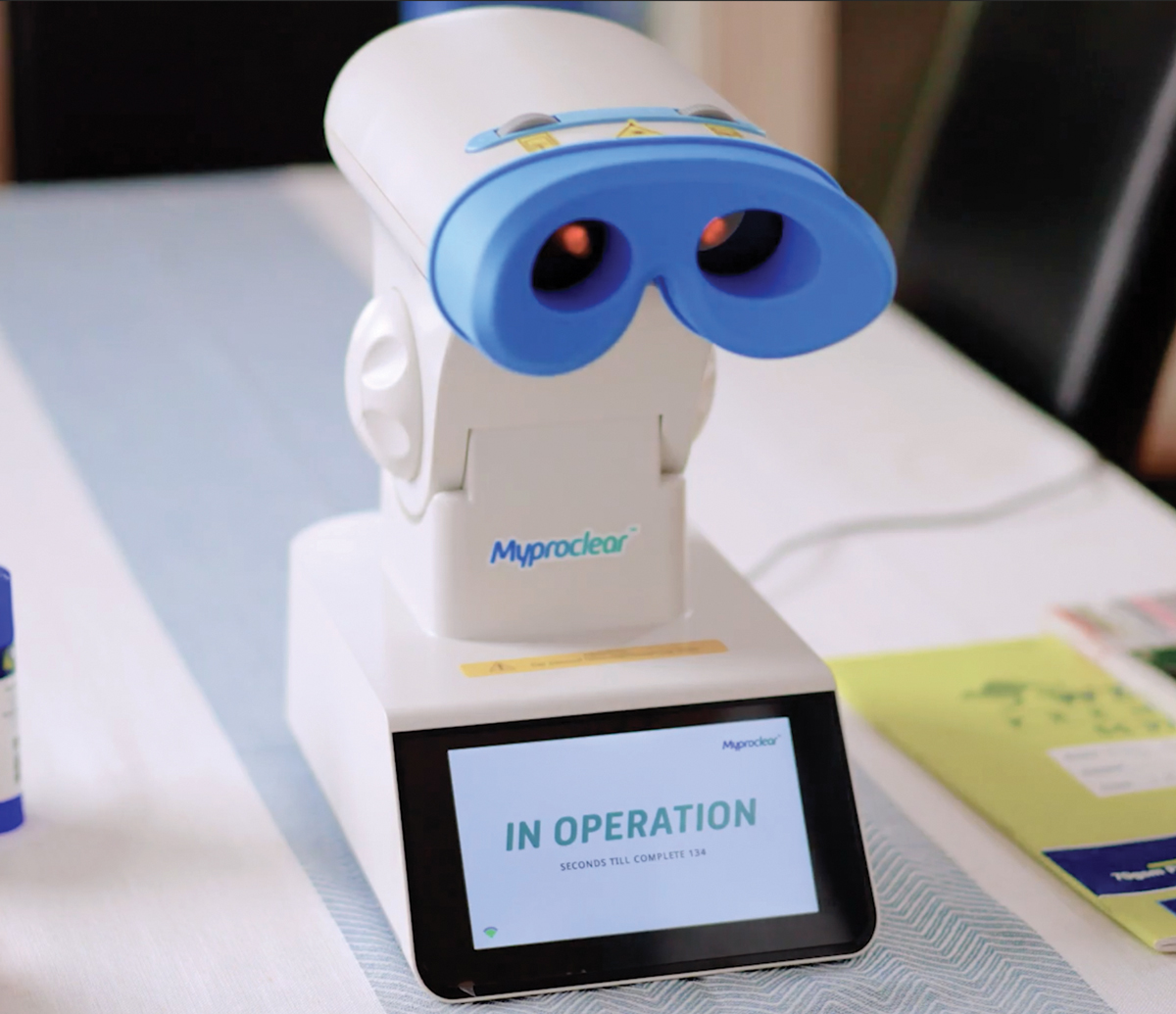 |
The therapy’s effect on the choroid was documented in this study, though not correlated with other variables like axial length. Photo: Eyerising International. Click image to enlarge. |
Though it hasn’t made its way to the US yet, repeated low-level red-light (RLRL) therapy is gaining attention internationally as an intervention for myopia control in children. Researchers have reported positive results in stemming grown in axial length and refractive error and have documented choroidal thickening effect. Structural changes underlying the thickening is unknown, however, which prompted a team of researchers from China and Australia to investigate longitudinal changes in choroidal structure in myopic children following 12-month RLRL treatment. They found that choroidal thickening is accompanied by an increase in both the luminal and stromal area.
A total of 143 children (67 in the RLRL and 76 in the control groups) were included. Choroidal parameters were derived from baseline and follow-up swept-source OCT scans taken at one, three and six and 12 months, which included the luminal area, stromal area, total choroidal area and choroidal vascularity index.
The choroidal thickening was found to be accompanied by increases in both the vessel luminal area and stromal area, with the increase in the luminal area being greater than that of stromal area. In the control group, with myopia progression, both the luminal and stromal areas decreased over time.
For the RLRL group, the luminal area, stromal area and total choroidal area consistently increased over time except at the six-month visit. The COVID-19 pandemic may have played a role, as home quarantine contributed to a rise in near work and a decrease in outdoor activities, both of which are known risk factors for myopic progression, the authors noted. There was an 11.5% increase in the luminal area, 7.9% increase in the stromal area, 10.3% increase in total choroidal area and 1.1% increase in choroidal vascularity index over 12 months.
A previous study reported that 1% atropine given to myopic children for six months resulted in an increase in both luminal and stromal parameters. “Similar to this finding, the current study observed an increase in both the luminal area and stromal area following 12-month RLRL therapy,” the authors explained in the study. “These results suggest that both choroidal vascular and stromal components may play a vital role in myopia control and require further investigation.”
Both the RLRL and control groups observed choroidal stromal area changes over time, suggesting that the observed increase in the stromal area following RLRL therapy was likely due to fluid accumulation resulting from increased choroidal vascular permeability, the authors noted.
“This study speculates that RLRL therapy will increase the subfoveal choroidal blood flow while myopia progression will reduce it, and choroid imaging might be an essential tool for monitoring the efficacy of RLRL therapy,” the authors concluded.
Xuan M, Zhu Z, Jiang Y, et al. Longitudinal changes in choroidal structure following repeated low-level red-light therapy for myopia control: secondary analysis of a randomized controlled trial. May 5, 2023. [Epub ahead of print] |

